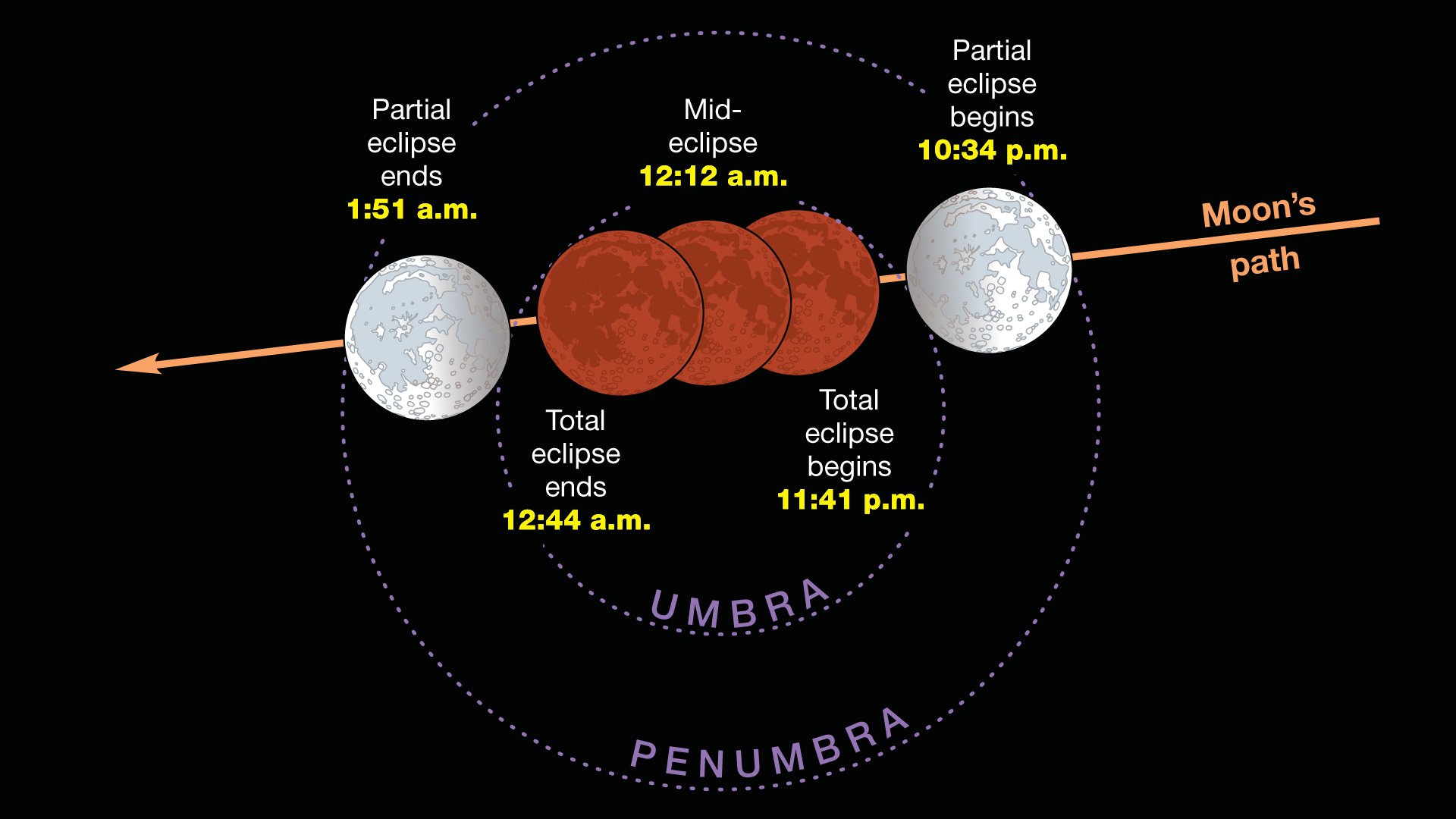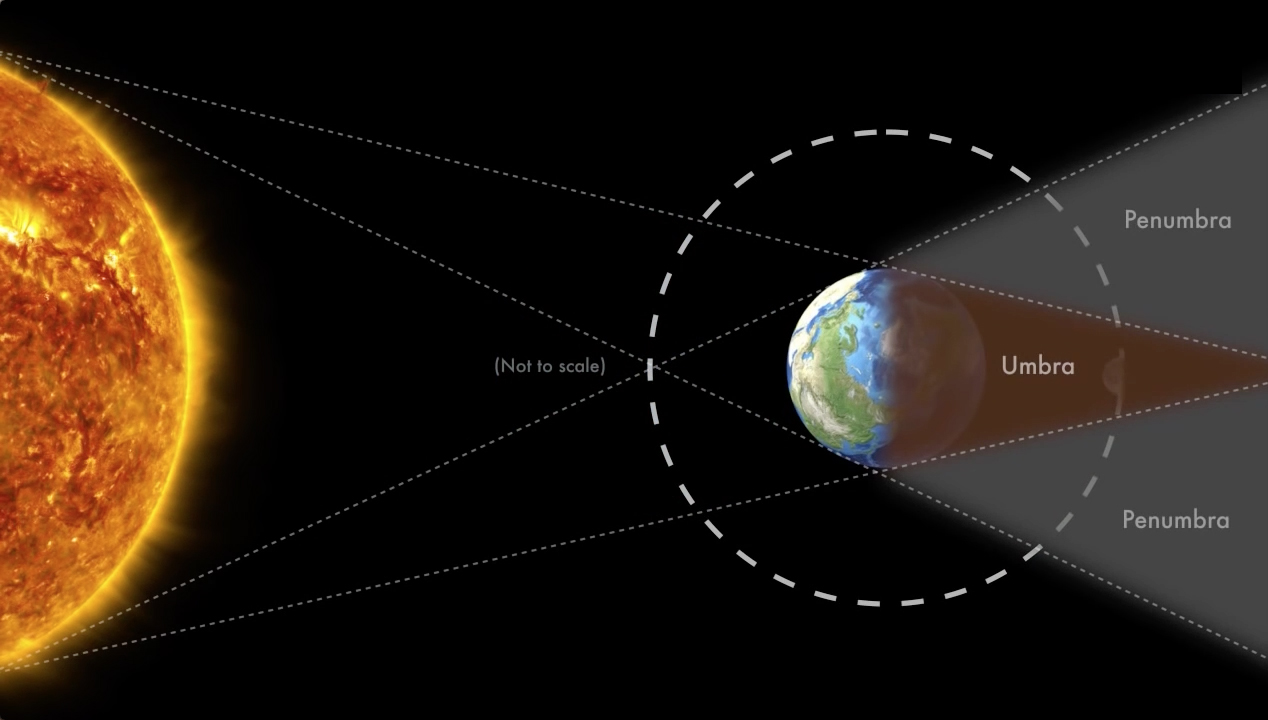
Blood Moon 2019: Teach Your Kids About the Total Lunar Eclipse with These NASA Resources!
Amid a partial government shutdown that has left most of NASA's staff furloughed, the space agency published a total lunar eclipse guide complete with educational tools for classrooms. The tools will help the American public better understand what will happen in their skies this Sunday (Jan. 20) when the moon passes through Earth's shadow, an event potentially visible to millions across North and South America.
Staff at NASA's Jet Propulsion Laboratory (JPL) in Pasadena, California, released a "Teachable Moments" webpage to prepare viewers for the upcoming celestial occurrence. During the eclipse, crimson and orange colors will engulf the moon as it travels through Earth's shadow.
If there are poor weather conditions on the night of the lunar eclipse, NASA officials recommend visiting the website TimeandDate.com for a feed of the event. We will also host eclipse webcasts here at Space.com. [Super Blood Moon Lunar Eclipse of 2019: Complete Guide]
NASA also published educational tools, including lunar eclipse and moon-observation worksheets, that kids can work through.
NASA JPL educational technology specialist Lyle Tavernier outlined what to expect from Sunday evening (Jan. 20) to early Monday morning (Jan. 21). Tavernier described Earth's shadow as cone-shaped with two regions of darkness: the penumbra and the umbra. The shell of the cone is the penumbra, and it is the region that the moon first enters.
To viewers in North and South America, the lunar face "will dim very slightly for the next 57 minutes as it moves deeper into the penumbra," Tavernier wrote. The moon will begin entering the deeper shadow region, the umbra, at about 10:33 p.m. EST on Sunday (7:33 p.m. PST).
"Some say that during this part of the eclipse, the moon looks as if it has had a bite taken out of it," Tavernier said. "That 'bite' gets bigger and bigger as the moon moves deeper into the shadow."
Breaking space news, the latest updates on rocket launches, skywatching events and more!
Some call this total lunar eclipse a blood supermoon for its reddish color and for its apparent size, which is caused by the moon's relative proximity to Earth during this part of the lunar orbit.
By 11:41 p.m. EST (8:41 p.m. PST), crimson color will fill the moon as it sits completely inside Earth's umbra. Sunset and sunrise colors will shade our natural satellite, because as sunlight streams through Earth's atmosphere and onto the lunar surface, it bends. Blue light, like the color people see in the daytime sky, gets scattered, so only red light trails into space.
"A variety of factors affect the appearance of the moon during a total lunar eclipse," Tavernier said. "Clouds, dust, ash, photochemical droplets and organic material in the atmosphere can change how much light is refracted into the umbra."
The moon may also appear darker during the January 2019 total lunar eclipse than other lunar eclipses. As a "supermoon," the full moon will be at one of its closest points to Earth this year, and its proximity means the moon will be deeper inside Earth's umbra shadow, Tavernier added.
The weekend's eclipse will come to an official end when the moon moves completely out of the penumbra, at 2:48 a.m. EST Monday (11:48 p.m. PST Sunday).
This month is also momentous for NASA because of the partial government shutdown, which has furloughed 96 percent of the space agency's employees, according to CBS-affiliated television station KHOU-11.
You can find NASA's Teachable Moments for the 2019 total lunar eclipse here. A lunar eclipse moon lessons guide for teachers is available here.
Editor's note: If you snap an amazing photo of the January 2019 total lunar eclipse that you'd like to share with Space.com and our news partners for a possible story or image gallery, send comments and images in to: spacephotos@space.com.

Doris is a science journalist and Space.com contributor. She received a B.A. in Sociology and Communications at Fordham University in New York City. Her first work was published in collaboration with London Mining Network, where her love of science writing was born. Her passion for astronomy started as a kid when she helped her sister build a model solar system in the Bronx. She got her first shot at astronomy writing as a Space.com editorial intern and continues to write about all things cosmic for the website. Doris has also written about microscopic plant life for Scientific American’s website and about whale calls for their print magazine. She has also written about ancient humans for Inverse, with stories ranging from how to recreate Pompeii’s cuisine to how to map the Polynesian expansion through genomics. She currently shares her home with two rabbits. Follow her on twitter at @salazar_elin.



